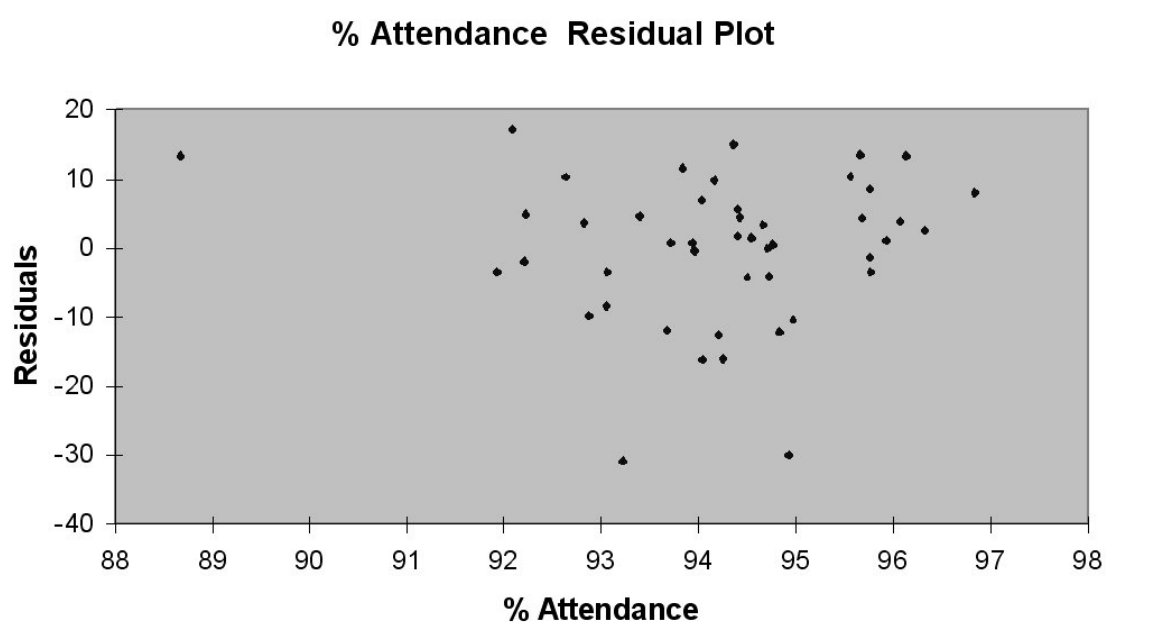TABLE 15- 8
The superintendent of a school district wanted to predict the percentage of students passing a sixth- grade proficiency test. She obtained the data on percentage of students passing the proficiency test (% Passing), daily average of the percentage of students attending class (% Attendance), average teacher salary in dollars (Salaries), and instructional spending per pupil in dollars (Spending) of 47 schools in the state.
Let Y = % Passing as the dependent variable, X1 = % Attendance, X2 = Salaries and X3 = Spending.
The coefficient of multiple determination (R 2 j) of each of the 3 predictors with all the other remaining predictors are,
respectively, 0.0338, 0.4669, and 0.4743.
The output from the best- subset regressions is given below:
Adjusted
Following is the residual plot for % Attendance:
Following is the residual plot for % Attendance:
Following is the output of several multiple regression models:
-Referring to Table 15-8, the null hypothesis should be rejected when testing whether the quadratic effect of daily average of the percentage of students attending class on percentage of students passing the proficiency test is significant at a 5% level of significance.
Definitions:
Fixed Coefficients
A term used in production and economics to describe technologies where inputs are used in strict fixed proportions to produce an output.
Production Possibility Set
A graph or curve depicting all maximum output possibilities for two or more goods, given a set of inputs.
Marginal Rate of Substitution
The rate at which a consumer is willing to give up one good in exchange for another, while keeping the overall satisfaction or utility constant.
Pareto Optimal
The configuration of resource distribution where making one person more prosperous requires making another person less so.
Q23: Referring to Table 14-5, what are the
Q28: In a particular model, the sum of
Q38: Referring to Table 14-5, the observed value
Q46: Referring to Table 14-15, the predicted mileage
Q69: Referring to Table 13-4, the least squares
Q85: Referring to Table 15-7, suppose the chemist
Q101: If you wanted to find out if
Q110: Referring to Table 17-6, what is the
Q130: Referring to Table 14-16, which of
Q227: A multiple regression is called "multiple" because